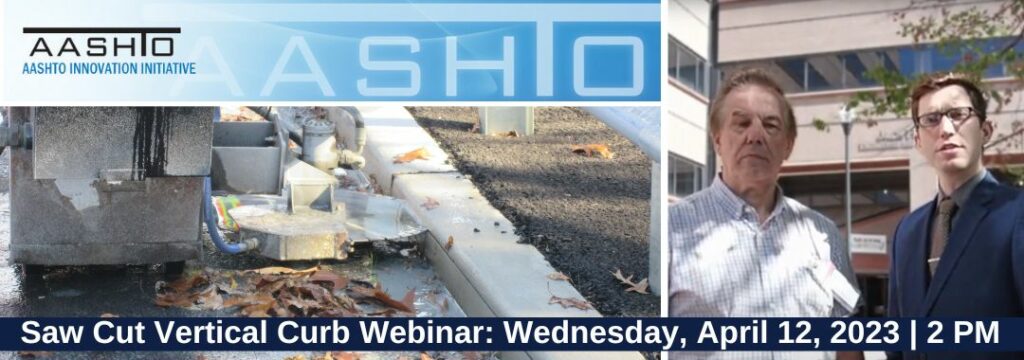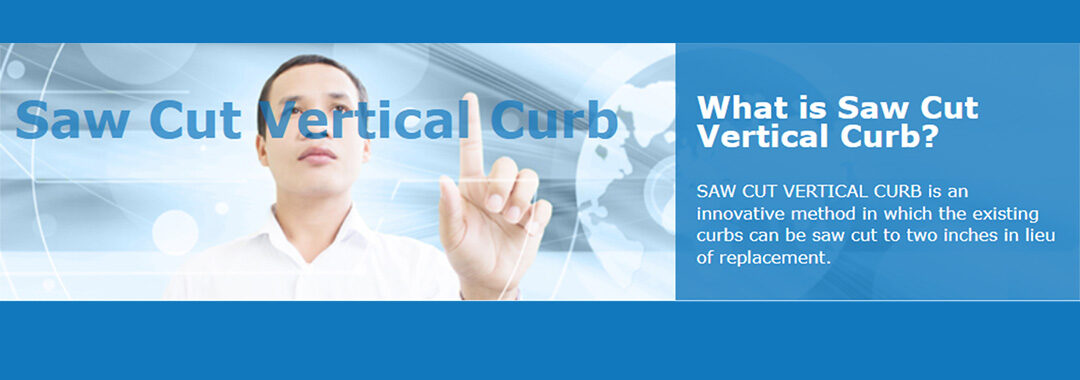
The American Association of State Highway and Transportation Officials (AASHTO) Innovative Initiative (AII) program recognized NJDOT’s Sawcut Vertical Curb as one of seven Focus Technologies in 2022. AASHTO held a webinar on Wednesday, April 12, 2023 during which NJDOT practitioners and contractors offered their first-hand experience with implementing the saw-cutting method on their projects successfully. The innovation was also recognized as the NJ’s Build a Better Mousetrap Winner in 2022 and a video description of the innovation can be found here.
Below is a reprint of the AASHTO Innovation Initiative Page that features the Saw Cut Vertical Curb and can be accessed here.

The AASHTO Manual for Assessing Safety Hardware (MASH) establishes uniform standards for the installation of roadway safety features, including longitudinal barriers. In accordance with the recent MASH standards, the New Jersey Department of Transportation (NJDOT) has updated the installation requirements for guide rails. Per this new requirement, curbs in front of and along guide rail end terminal treatments should be limited to a maximum 2-inch exposure. The typical exposure of existing curbs is four inches. To make guide rail installation MASH compliant, the conventional practice is to remove existing curbs and replace them with 2-inch curbs. The practice typically requires seven days of field operations for the removal, replacement, and curing of concrete. Not only does this timeframe add to labor costs, but also exposes work crews and motorists to work zone traffic for longer periods of time.
NJDOT has developed an innovative method in which the existing curbs can be saw cut to two inches in lieu of removal and replacement. The existing guide rail can remain in place during saw-cutting, while the construction crew can return at a later time to remove and upgrade the guide rail. The saw-cutting approach requires only two days of labor. The process uses a power-driven vertical curb saw fitted with horizontally-oriented, diamond-edge blades or abrasive wheels that are capable of sawing to the required dimensions without causing uncontrolled cracking. The saw is water-cooled, circular, and has alignment guides. The saw is also capable of immediately collecting the slurry produced from cutting the concrete. Traffic control in work areas requires a moving operation set up that includes channelizer barrels and drums, construction signs based on the Manual on Uniform Traffic Control Devices (MUTCD) and DOT standard details, and a truck with a mounted crash cushion.
Resources
- Saw Cut Vertical Curb Webinar (pdf)
- Saw Cut Vertical Curb Webinar Recording (video)
- NJDOT Specification for Saw Cut Vertical Curb (pdf)
- NJDOT 2019 2019 Standard Specifications for Road and Bridge Construction (website)
Contact Information
Gary Liedtka–Bizuga
Senior Engineer Transportation Design Services
(609)963-2525
gary.liedtka-bizuga@dot.nj.gov
Henry Jablonski
Senior Engineer Transportation Construction Services And Materials
(973)714-1929
henry.jablonski@dot.nj.gov

